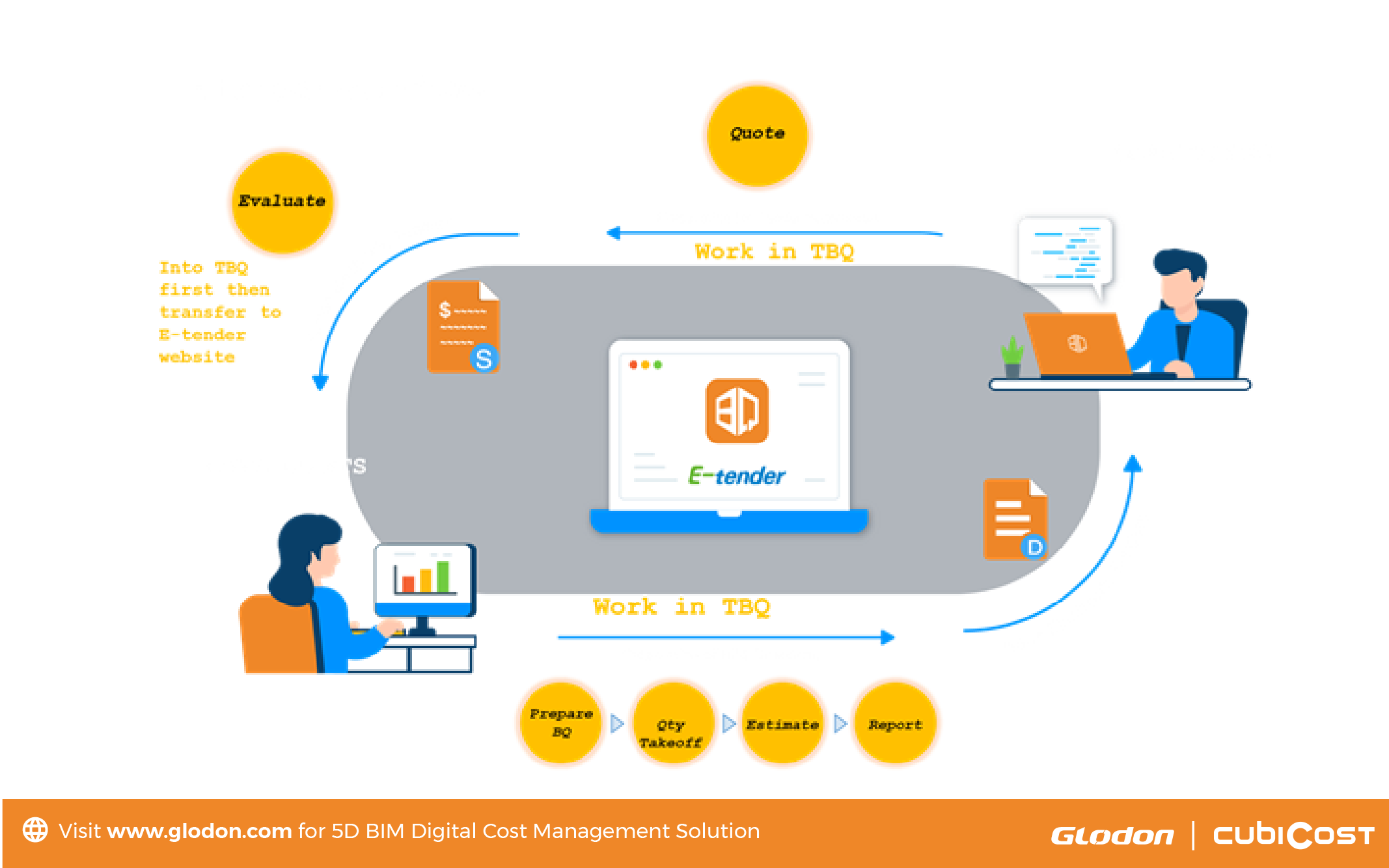Paper-based tenders have always been the mainstream. However, governments and private companies choose E-tendering. As for the construction industry, many successful examples show us the benefits of E-tendering. In Singapore, more than 10,000 buyers, 79,000 quotations worth SGD900 million, and 144 agencies regularly participate in the online tendering platform (Mercer, 2018). In Malaysia, the tender process has been simplified and the tender result is more reliable due to E-tendering implementation (Mohd et al., 2017). However, the barriers to E-tendering implementation cannot be ignored. In this post, we'll explain why E-tendering become the popularity in the construction industry, explain various barriers to E-tendering implementation and finally provide an intelligent solution for E-tendering implementation in the construction industry.
What is E-tendering, and Why it becomes popular?
The term of "E-tendering" refers to the process of sending and receiving tenders through online procurement platforms (Designing Buildings, 2020). The E-tendering process is similar to the traditional method, but it is paperless and online-based. But how did E-tendering gradually replace the conventional method and become the preference within the construction industry? Here are the two main reasons.
Self-upgrading within the industry
In the construction industry, tendering is an inevitable process no matter for selection of contractors, materials, or equipment.  Let's imagine the traditional tender process. Once the consultant sends tender documents to several contractors, each of them will send piles of paper tenders back. How much space is required to place such a large amount of paperwork? Not to mention, it takes time to manually input the quotation of the contractor into excel and the data is error-prone. This paper-based tender process is often costly and troublesome to both consultants and contractors.
Let's imagine the traditional tender process. Once the consultant sends tender documents to several contractors, each of them will send piles of paper tenders back. How much space is required to place such a large amount of paperwork? Not to mention, it takes time to manually input the quotation of the contractor into excel and the data is error-prone. This paper-based tender process is often costly and troublesome to both consultants and contractors.

The awareness of the shortcomings of the conventional method has driven the self-upgrading within the industry.
External factors
In addition to the industry's self-advancement, external factors also play an essential role in E-tendering's popularity. First, the construction industry is gradually globalized, with clients, suppliers, contractors, and consultants all over the world. To facilitate quotations from all over the world, the booming development of E-tendering is inevitable.
Due to the recent outbreak of the epidemic, many countries and regions had restrict travel bans or quarantine policies. Offline tendering is difficult to be conducted. However, construction projects are always under a tight schedule and the tendering process is the most important and critical part of a construction project. These dilemmas have contributed to the prosperity of E-tendering.
What barriers do we face when implementing E-tendering?
Although the strengths of E-tendering are well-aware within the industry, the implementation level still needs to be improved. So, what barriers do we face when implementing E-tendering?
Technical barriers
- Account Security: The network environment cannot guarantee security, and tender documents can be modified without authorization
- Data Transfer & Data Backup: Data can be damaged and lost during transmission
- Attack Resistance: Confidential documents and information such as prices might be stolen
Human barriers
- Low acceptance of E-tendering due to lack of training
- Unwilling to change since insisting the old way is tolerable
- Fear of replacing by high-technology
Organizational barriers
- Lack of leadership support
- High input costs but not significant returns
- less opportunity due to incompatible tendering system
How to conduct E-tendering in TBQ
To overcome the barriers above, a practical and easy-to-use solution is introduced to those who have similar concerns. TBQ provides an intelligent solution for E-tendering which can improve working efficiency, reduce cost, ensure data security, and increase the speed of execution.
Step1:Preparation of BQ (Consultant)
The consultant can compile BQ and prepare PTE in TBQ through its own BQ Library, Resource Library, and various convenient functions such as adjusting prices and getting data from other projects. BQ template and rates of labor, materials, and equipment can be stored in TBQ and be the reference for PTE.
Step2: Generate BQD files (Consultant)
Once the tender document is finished, the consultant can generate a BQD file, set an access password for it, and send the file to targeted contractors with a few clicks. The entire process is paperless and secured.
Step 3: Pricing (Contractor)
Once contractors receive the tender document, contractors can import the BQD file into TBQ software and start pricing by using existed price library in TBQ. Besides, price analysis in multi-dimension and adjusting prices is possible and simple in TBQ.
Step 4: Generate BQS files (Contractor)
Once pricing is done, the contractor can generate a BQS file, set an access password for it, and send it back to the consultant with a few clicks. No more piles of paperwork delivered physically.
Step 5: Evaluation (Consultant)
After collecting BQS files from contractors, the consultant can start the evaluation process in the E-Tender platform presented by TBQ.
TBQ makes tender evaluation easy, efficient, and accurate by:
- Importing all contractors' tender submissions by one click, quick and accurate.
- Checking quotes with one click, comparing changed prices automatically, no more copy the prices into Excel and comparing manually.
- Ranking the quotes from the highest to the lowest, and can set a quote as the benchmark for comparison.
- Multiple round and across-round comparisons are possible with customized settings.
- Generating various graphics and excel reports for consultants to extract information to report to owners.
Conclusion
With the powerful pricing and compiling BQ functions of TBQ and the advantages of the E-tender platform, both contractors and consultants can gain benefits. Moreover, most of the barriers to E-tendering implementation such as data security can be solved in TBQ perfectly. With TBQ and its E-tender platform, the industry can definitely obtain greater economic and social benefits.



